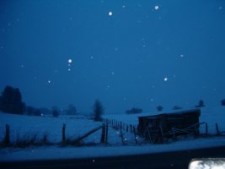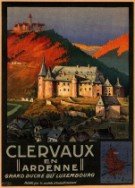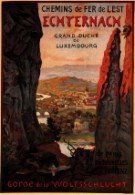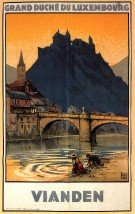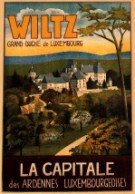Luxembourg Fine Dining Photos
Luxembourg City, because of its large number of international diplomatic and business visitors, has many fine restaurants offering international cuisine. It also has just as many small cafes and bistros featuring traditional dishes. In smaller towns and villages, hotel restaurants are often quite good, as are the small local cafes.
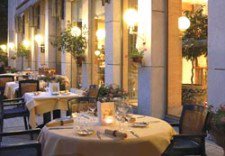
Here is a small sample of the atmosphere, and foods
available in many fine restaurants, and other establishments
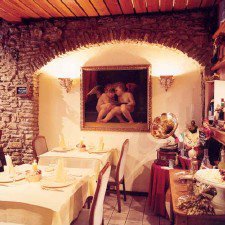

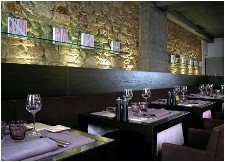
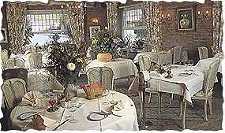

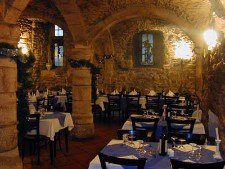
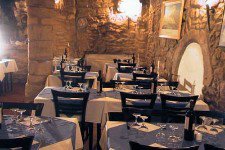
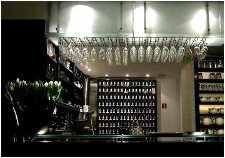


Although many of the fine beers of Belgium and Holland are available here,
Luxembourg has its own that take a backseat to none -- look for such brand
names as unfiltered Mousel (pronounced "mooz-ell"), Bofferding, and Henri
Funck.
Winemaking along the Moselle has a history that dates back to the Romans.
And, of course, the Moselle wines (mostly white) will top any list.
Look for Riesling, Pinot Gris, Pinot Noir, Pinot Blanc, Auxerrois, Rivaner,
Elbling, Gewürztraminer, and Crémant de Luxembourg, and for the National Mark,
which certifies that they are true Luxembourg wines.
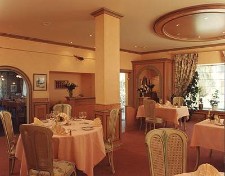
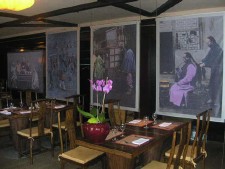
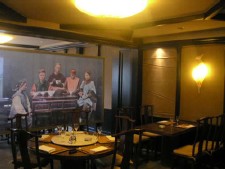


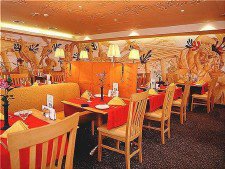
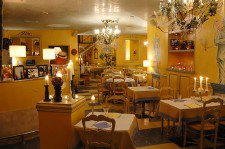
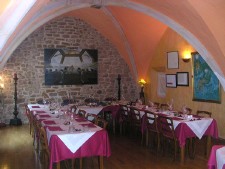

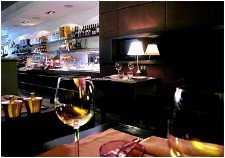
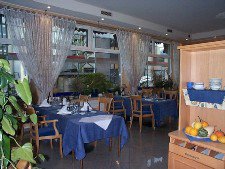
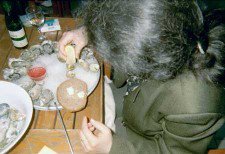
love those oysters

Typical Luxembourg food of grilled sausages (red and white), burgers and
meaty steaks - all served with grilled onions - are sold at this stand along
with grompere kichelcher (fried potatoes).

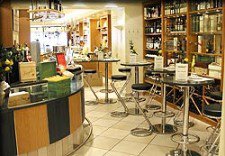
wine, cheese, bread
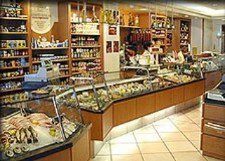
wine, bread, jams, cheese, fish, meat deli

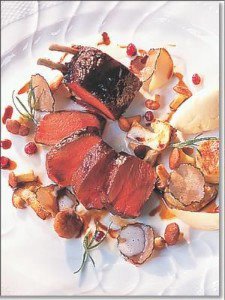
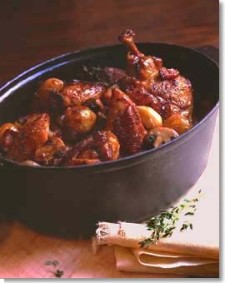
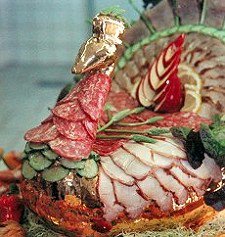
party tray samples

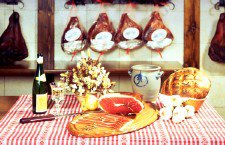
smoked ham platter includes
Ardennes ham smoked in saltpeter; hare, wild boar, and other game
(during the hunting season); and lovely small plum tarts called quetsch
(in Sept). Other tasty treats include the national dish of smoked neck of
pork with broad beans (judd mat gaardebounen)
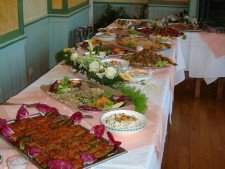
buffet style
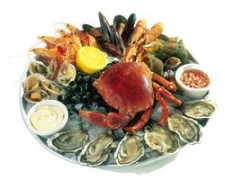

seafood platters include trout,
crayfish, and pike from local rivers
also
a friture of fried small river fish such as bream, chub, gudgeon, roach,
and rudd; calves' liver dumplings (quenelles) with sauerkraut and
boiled potatoes;

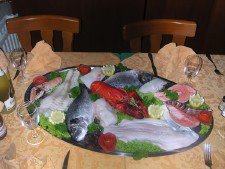



black pudding (treipen) and sausages with mashed potatoes and horseradish;
and a green-bean soup (bouneschlupp).
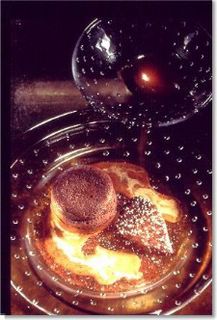

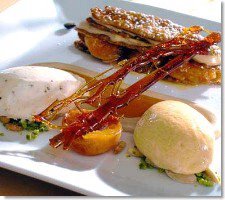

French cuisine also features prominently on restaurant menus,
and German and Belgian influences are felt as well.
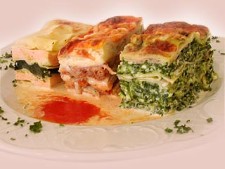
cheese melts

take home samples

Luxembourg Food Recipies ....
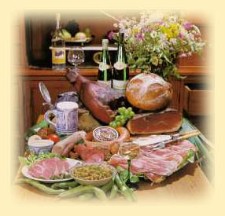
*Luxembourg Foods
(click a village, see the recipies and pics)
*Luxembourg Home Cooking Recipies
(Luxembourg cook it yourself recipies)

Schéi Chrëschtdeeg is the standard Christmas greeting in
Luxembourg which translates into "have nice Christmas-days."

Kleeschen can be seen in various locations in cities and towns as he comes
to the shops, and receives the children for photo sessions.

"Kleeschen" is another name for St. Nicholas who comes from the heavens
to reward children who have been good. His feast day is celebrated on
December 6th.
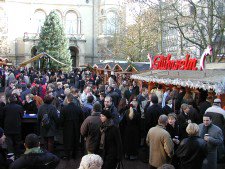
On evenings before this date, children put their shoes in front of their
bedroom door, or on the windowsill, expecting St. Nicholas to fill them
with a small gift during the night.
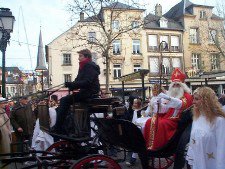
On the eve of December 6th, children place a plate on the kitchen or
dining-room table which St.Nicholas fills with sweets during the night
when he brings gifts. The kindly saint also pays visits to children in schools.
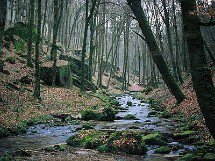
From the beginning of December, streets and store windows in
all major cities are richly illuminated and decorated. Christmas
trees adorn public squares and out-door Christmas markets
throughout the country attract many shoppers.

From wooden huts that are set up in town squares, all sorts
of Christmas goods are on sale: locally produced arts and crafts
(candles, Christmas tree decorations, cribs, etc), and of course plenty
of food and drink to warm you from the inside.
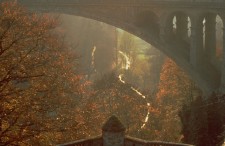
The latter includes the popular spiced wine which is served hot,
usually in special mugs, and is a regular part of the menu at Christmas
Markets all through Europe.
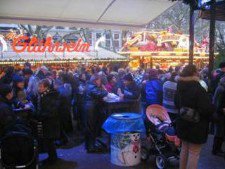
Foods on sale include various soups (with or without Mettwurscht -
a local sausage specialty), crepes, and Thüringer. The air is filled with
the wonderful scents of sausages cooking, fresh bakery goods, mulled
wine, and fresh-cut pine boughs while music is everywhere.
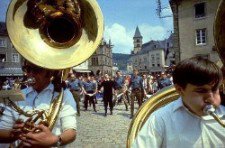
Christmas Market concerts are presented in bandstands and on
special stages set up for the occasion. Local bands, brass quartets,
string trios, choirs, and soloists all contribute to the Christmas atmosphere.
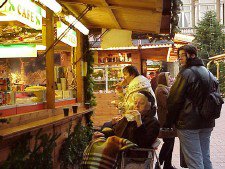
Most people in Luxembourg, a Catholic country, celebrate Christmas Eve
with family and close friends.
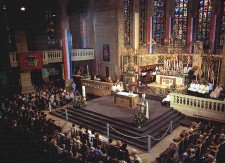
Many attend Midnight Mass, after which the family gathers for supper
consisting sometimes of a typical Luxembourg winter menu: black-pudding
with mashed potatoes and apple sauce.

The Midnight Mass in the Benedictine Abbey of St. Maurice and
St. Maure in Clervaux (a small picturesque Ardennes town) is of
great renown and has been televised throughout Europe in recent years.
Clubs and associations also organize Christmas Eve and Christmas Day festivities.
Some cities produce Nativity plays, with children as actors, others give concerts
in the afternoon of December 25th.

There is no Santa Claus in Luxembourg at Christmas time. Instead the
Christ child usually brings the Christmas gifts during the night, although
the tradition of Father Chrismas is practiced by some families. If the family
attends Midnight Mass, always a welcome excuse for children to stay up late,
the gifts are sometimes opened when they return from the church service.
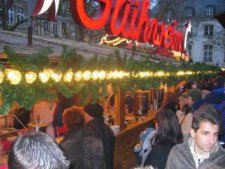
Traditional foods during the holiday season include "Stollen", a kind of
fruit loaf often laced with rum and "Bûche de Noël" an ice cream cake
confection, covered with dark chocolate to resemble the appearance of
a Yule log.
On Christmas Day the traditional dinner often features black pudding or
civet of hare, sometimes venison, or perhaps turkey. After the meal the
family may go for a walk which is particularly fun if there's snow.
Boxing Day (Dec. 26th) is a day for visiting with friends and relatives whilst
eating vast quantities of holiday food.

Luxembourg Photo Album ....
*Luxembourg Photo Archive
(click a village, see the pics)
